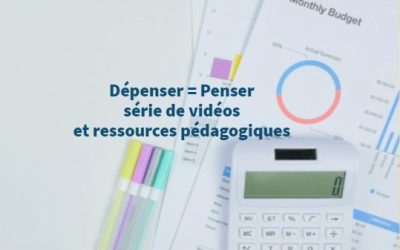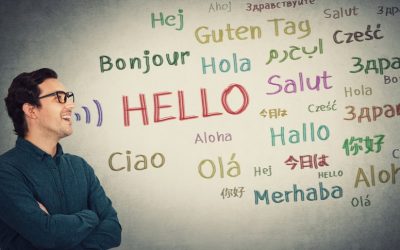Aperçu
Le temps passé dans la nature favorise le lien émotionnel avec la terre et cultive l’appréciation et l’empathie pour les actions écologiques et sociales. Alors pourquoi ne pas améliorer vos activités d’apprentissage des langues en allant à l’extérieur, pour permettre aux apprenants d’explorer et d’interagir dans la nature tout en pratiquant des compétences linguistiques dans un contexte réel? En combinant l’enseignement des langues avec l’apprentissage en plein air, les éducateurs de la maternelle à la 12e année (et de la petite enfance) peuvent rendre l’apprentissage des langues plus immersif, plus pertinent et basé sur l’enquête!
Overview
Time spent in nature fosters emotional connection to the land and cultivates an appreciation and empathy for ecological and social actions. So why not enhance your language learning activities by heading outdoors, to allow learners to explore and interact in nature while practicing language skills in a real-world context? By combining language education with outdoor learning, K-12 educators (and early childhood) can make language learning more immersive, inquiry based and relevant.
NB Curricular Connections
Middle level Post Intensive French (example)
- Oral communication: – Big Idea: Speak, Listen, Communicate, Interact – Skill Descriptor: Ask for and provide information in social and school settings with some accuracy.
- Writing and Representing: – Big Idea: Create Simple Texts – Skill Descriptor: Produce simple texts on familiar topics of personal interest.
- Numerous opportunities for cross curricular connections depending on learning objectives – Science, Social Studies, Math, Visual Arts, Personal Wellness, Physical Education, Technology.
CEFR ZONE A1-A2
Reflect on ways to integrate outdoor learning with your language learning objectives:
Possible Ideas:
- Nature Based Vocabulary Building: Integrate nature-related vocabulary into language lessons, encouraging students to learn words phrases associated with the environment they are immersed in. Use natural objects as teaching aids to reinforce vocabulary, such as naming plants, animals, and geographical features.
- Language games and challenges: Create language-based games and challenges that requires students to communicate, collaborate, and solve problems while immersed in a natural setting.
- Storytelling in nature: Encourage students to create and share stories inspired by their surroundings. This could involve writing narratives, scripts, or even recording sounds and spoken stories while being outdoors.
- Project-based learning: Implement project-based language learning projects that involves creating something in the natural environment. For example, students can document a nature trail, write poems inspired by outdoors, or produce a play set in nature.
- Multisensory Language Activities: Utilize the multisensory aspects of nature to engage different senses in language. For instance, students can describe what they see, hear, smell, and touch in the natural environment using the target language.
- Language exploration through nature journals: Have students keep nature journals where they document observations, reflections, and thoughts in the language they are learning. This practice not only enhances language skills but also encourages mindfulness and a closer connection to nature.
Le journal d’exploration
Activité 1: Les 5 sens au fil des 4 saisons
In preparation:
- Learn more about the Maker Naturel pedagogy, by exploring the site Fabrication Naturelle – Labos Créatifs (laboscreatifs.ca) . You will find various holistic bilingual ideas/resources.
- Learn more about nature journals and to get inspired, by viewing this video from Brilliant Labs- Labos Créatif : Journal d’exploration
What You’ll Need
- Nature journals of your choice for each of your students (e.g. notebook, duo-tang, binder, digital portfolio).
- Optional graphic organizer for learners – pour l’activité les 5 sens au fil des saisons,
Instructions
- Activate prior knowledge and review vocabulary related to the 4 seasons and the 5 senses.
- Find a suitable outdoor space and provide time for learners to observe and record information in their journal, as they reflect on what they are experiencing through their senses. This can be done individually or with a partner. Depending on your personal choice, learners can write directly in their journal or use the attached graphic organizers provided.
- Support language learners with unknown words – some words may need to be further investigated and looked up in class later.
- Encourage learners to be creative – sketch, label or take pictures with a device if possible!
- Gather in small groups, and then whole class to share ideas. To practice the language skills, learners can compare their own entries or with those of other learners (linked to CEFR A1.2).
- Repeat activity regularly, change locations and challenge learners to include and expand on more words each time.
- Encourage learners to reflect on their observations and model how this information could be used to describe the weather, an outdoor place that they like or justify a favorite season in more details/sentences (linked to CEFR A2.2).
- Try adding the additional sense/sentence starter of how they feel. (Je me sens) while they are doing the activity in nature (linked to B1.1). These types of experiences could also lead to cross-curricular discussions on the impact of mindfulness on health and well-being.
- As the seasons change or at the end of the year, invite students to refer back to the information they recorded in their journals and prepare a short presentation in the format of their choice, on a favorite season.
Extension ideas
- Make a Natural Color Wheel
- Explore more relevant bilingual outdoor learning online resources and supports for various levels
Reflection Activity
- See attachment for reflection tools and ideas.
Attachment
Graphic organizer – les 5 sens des saisons
Reflection tools
Global Competencies
Being and Becoming Globally Competent – NB Curriculum Framework
CM, CL, CTPS, SASM, SGC
Acknowledgements
- Brilliantlabs/Laboscréatif: Natural Makerspace – Brilliant Labs




